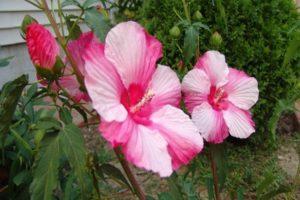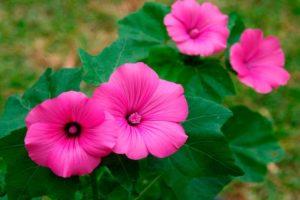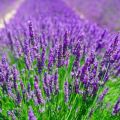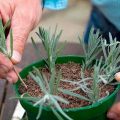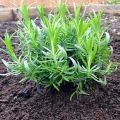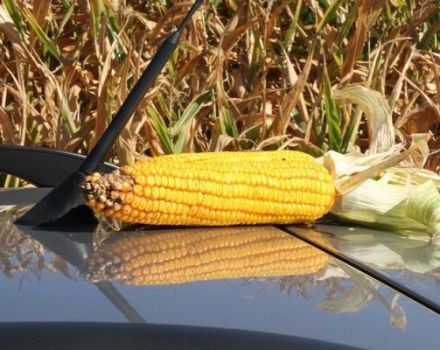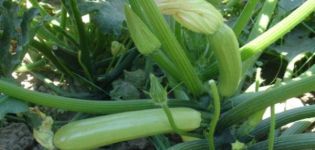Planting and caring for lavender in Siberia, growing rules and shelter for the winter
Lavender is a plant that will decorate not only any garden, but also come in handy in everyday life, for treatment. This flower has a pleasant, soothing scent, which is why it is often used for aromatherapy. Growing lavender on the site is not that difficult, even if you live in the northern regions. You just need to know the rules for planting and caring for lavender in Siberia, as well as choose a variety that is resistant to cold.
Frost-resistant lavender varieties
Lavender came to us from the south, so out of 20 plant species, only one is suitable for Siberia - narrow-leaved lavender. Its other name is English. Under a thick layer of snow, it can withstand frosts down to -35 degrees. Narrow-leaved lavender looks like a spherical shrub, up to 70 centimeters high. Below are lignified shoots, flowers - purple and lilac shades, similar to spikelets.
It was from this species that varieties suitable for planting in Siberia were bred:
- Beachwood is one of the most cold-resistant. The inflorescences are of a pleasant blue color, the flowering time is from June to July.
- Normandy - although this variety is annual, it grows in almost any conditions. It quickly grows green mass and forms flowers.
- Munsted - reaches a height of 40 centimeters, tolerates windy weather well. Flowers are deep blue.
- Hidkot - the bush can grow up to 1 meter, gives a lot of young shoots, flowers are dark purple. This variety blooms throughout the summer months.
- Alba - up to 40 centimeters. Flowers are white, differs from other varieties in a bright, tart aroma. The composition from Alba looks interesting in combination with other varieties.
- Rosea - inflorescences are pale pink.
- Buena Vista is one of the most interesting varieties. Flowers are blue with bluish cups. It blooms in two waves - first in summer (until July), then in autumn.
- Lavandin - blooms very luxuriantly, besides, it has the strongest aroma. Therefore, when growing it, you need to be careful if you are allergic.
The variety of varieties allows you to choose the color and blooming time exactly those that suit you.
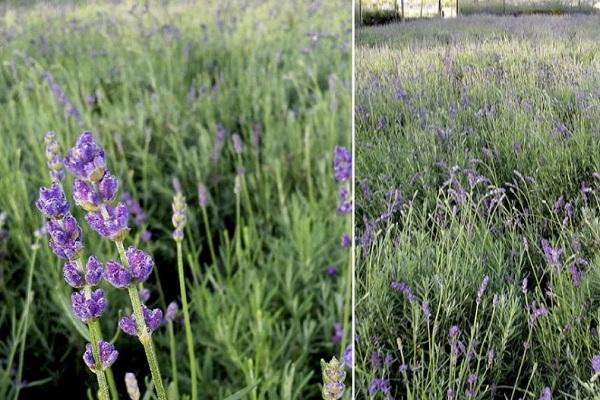
Features of growing shrubs in Siberia
Many gardeners who decide to grow lavender in Siberia note that caring for it is not very different due to the region. But for the winter, the flower must be carefully prepared, and besides this, there are other nuances.
How to grow lavender seedlings from seeds
Seeds are the best way to grow lavender in Siberia. They are hardened so that later seeds and germinated plants do not die due to temperature changes.The whole process of obtaining seedlings is divided into 4 stages:
- Purchase of seeds. Be sure to check the expiration date and the integrity of the packaging, otherwise the seeds may not sprout.
- Hardening (or stratification) - lasts 1 month, during which the seeds are stored in packaging on the bottom shelf of the refrigerator.
- Sowing - falls on the beginning of March. For this, a shallow pot with fertile soil is used. You need to bury the seeds to a depth of 3 millimeters. Do not forget to water (water should be at room temperature).
- Picking - carried out after the appearance of two leaves. Each plant must be transplanted into a separate container.
To grow seedlings at the last stage, keep the temperature at +20 degrees. After that, in late May-early July, you can plant plants outside.
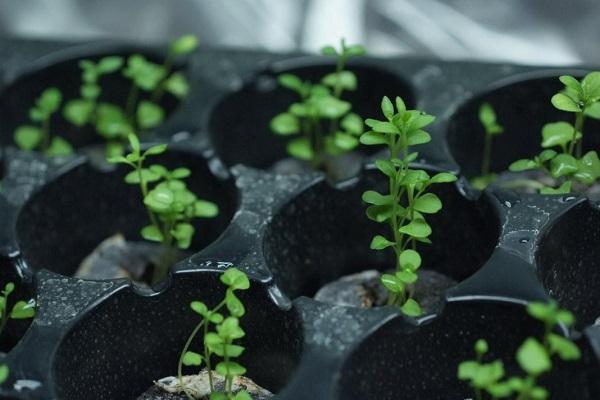
Transplanting seedlings into open ground
Even for cold-tolerant lavender varieties, space plays an important role. It must meet the following requirements:
- a lot of sun;
- warm enough;
- windless;
- there should be no stagnant water - this is harmful to the roots;
- the ideal option is foothills, hills.
As for the soil, it is better to choose a sandy-clayey soil with good drainage. You can transplant when the temperature is above zero at night, on a warm day without precipitation. Plant each seed 30 centimeters deep, with the space between the holes equal to half the bush. The tightness is harmful to lavender and interferes with abundant flowering. After digging a hole, fill it with fertile soil, and after planting, water the plants.

Can I sow seeds directly into open ground?
Even in Siberia, it is possible to plant lavender seeds outdoors, in open ground. It is easier, but this method significantly reduces the number of sprouts in lavender. In addition, if for sowing you chose the autumn months (September or October), then there is a risk that the seeds will freeze after the first frost.
To prevent this from happening, after the first snowfall, throw as much snow as possible on the landing site. This will keep them warm and the seeds will naturally harden over the winter.
It is not so risky to plant seeds in the spring. But then you will need to refrigerate them the same way as before planting in pots. Place the seeds in a container of sand, and then leave in a cool place for one and a half to two months. Then you can plant them.

Lavender care rules
Lavender belongs to unpretentious plants, and does not require any special care measures. Therefore, even a novice gardener can cope with it.
Watering
An abundance of moisture is harmful to lavender. Therefore, water it only after the topsoil dries. It is necessary to increase watering during flowering, and then immediately stop it. But if you have planted plants on a slope where water flows easily, dig holes nearby to hold it.
Top dressing
Lavender does not need abundant fertilization, and if the soil is fertile enough, then you can do nothing more. In another case, feeding is done two times:
- In the spring, when the bush is growing, nitrogen works well. For example, urea (half a tablespoon in 5 liters of water per plant) and organic fertilizers.
- In summer, before flowering, use mineral fertilizers or organic again.
Organic fertilizers should be buried as deep as possible in the ground.
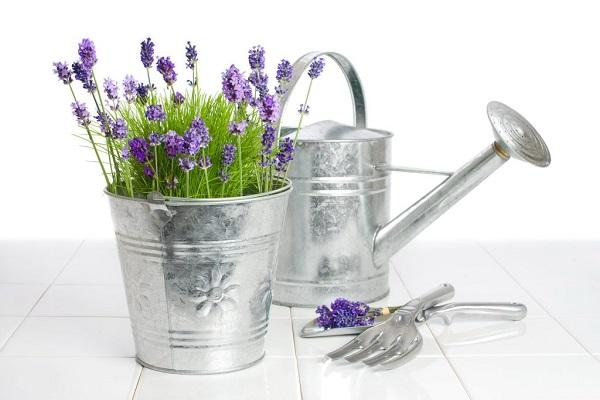
Soil care
Loosening is necessary for lavender in order to improve air exchange, although this is not easy with overgrown bushes. Do not dig too deep or damage the roots and remove all weeds. To make it easy to care for the land, you can mulch it with peat - this will prevent the growth of weeds and prevent crust formation. In addition to peat, only loose compost can be used as mulch, otherwise the soil will be too moist.
Pruning
In cold climates, pruning is usually done in the spring, according to the following rules:
- First of all, dried branches are cut, then - with damage.
- Each plant should have 6 newly grown green stems.
- In autumn, pruning is not carried out so that the branches create an interlayer, and the plant hibernates in the warmth.
If you prune in this way, the plant will rejuvenate, and the bush itself will become neat and grow violently. But removing all the stems to the lignified parts can be detrimental to lavender.
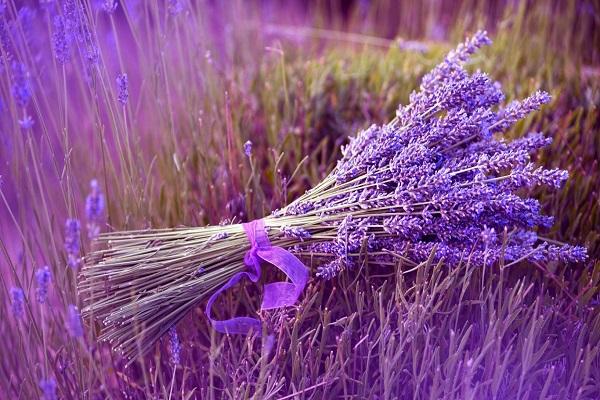
Shelter
Be sure to shelter lavender for the winter, as it is a very thermophilic plant. To do this, use:
- agrofiber;
- burlap;
- on top, you can additionally put a layer of spruce branches.
Never cover with compost or fallen leaves. Moisture collects underneath, causing the lavender to rot.
Protection against diseases and pests
There are not so many diseases in lavender, and pests on it are also rare. First of all, it is a rainbow beetle (it feeds on foliage) and a penny (because of it, the plant becomes covered with an unpleasant white foam). In this case, simply wash the plant with a strong stream of water. The same should be done if you notice aphids, but then treat all the bushes with Aktellik.
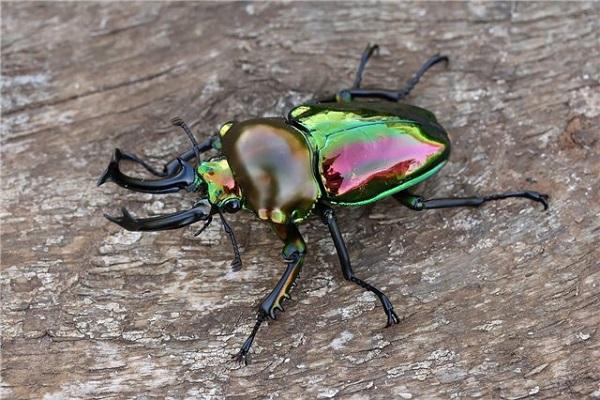
If affected by rainbow beetles and leafhoppers, it is necessary to change the layer of mulch under the lavender. But the most dangerous disease is gray rot. It appears with excessive moisture or damp climates. Diseased bushes must be destroyed, the remaining ones must be treated with a fungicide solution.
Breeding culture
The easiest way to breed lavender is to divide an already mature bush. To do this, at the beginning of summer, the bushes are covered with earth so that more roots form on the stems. In September or October, the bushes are dug up and carefully divided with a shovel into several parts, which are then transplanted to the right place. This lavender will bloom next year.
Another effective method is layering. The oldest shoot is pinned to the ground with a metal spear, soil is placed on top, but the top remains free. Roots grow on the part sprinkled with soil, after which the shoot is cut off and planted in a new place. You need to take care of him in the same way as for an adult bush.
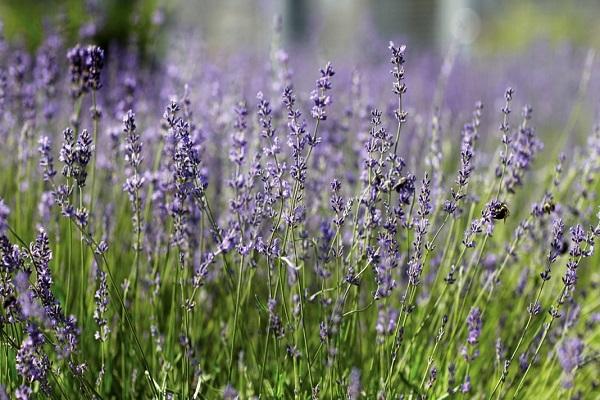
Reproduction by cuttings allows you to get new bushes at any time of the year. To do this, you need to do the following:
- Cut off lignified twigs from an adult bush.
- Place universal seedling soil in tall pots, which should be watered with warm water beforehand.
- Stick the cuttings into the soil.
- The pots should be covered with plastic wrap to maintain high humidity underneath.
- Air out the pots daily and spray the soil when it dries.
- After one to two months, each shoot will take root and leaves.
After that, in spring or autumn, new bushes can be planted in open ground.
